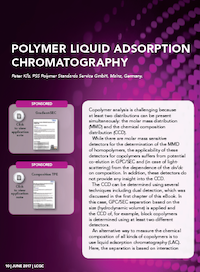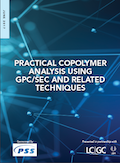Polymer Liquid Adsorption Chromatography
Copolymer analysis is challenging because at least two distributions can be present simultaneously: the molar mass distribution (MMD) and the chemical composition distribution (CCD).
While there are molar mass sensitive detectors for the determination of the MMD of homopolymers, the applicability of these detectors for copolymers suffers from potential co-elution in GPC/SEC and (in case of lightscattering) from the dependence of the dn/dc on composition. In addition, these detectors do not provide any insight into the CCD.
The CCD can be determined using several techniques including dual detection, which was discussed in the first chapter of this eBook. In this case, GPC/SEC separation based on the size (hydrodynamic volume) is applied and the CCD of, for example, block copolymers is determined using at least two different detectors.
Evaluating the Accuracy of Mass Spectrometry Spectral Databases
May 12th 2025Mass spectrometry (MS) can be effective in identifying unknown compounds, though this can be complicated if spectra is outside of known databases. Researchers aimed to test MS databases using electron–ionization (EI)–MS.

.png&w=3840&q=75)

.png&w=3840&q=75)



.png&w=3840&q=75)



.png&w=3840&q=75)










